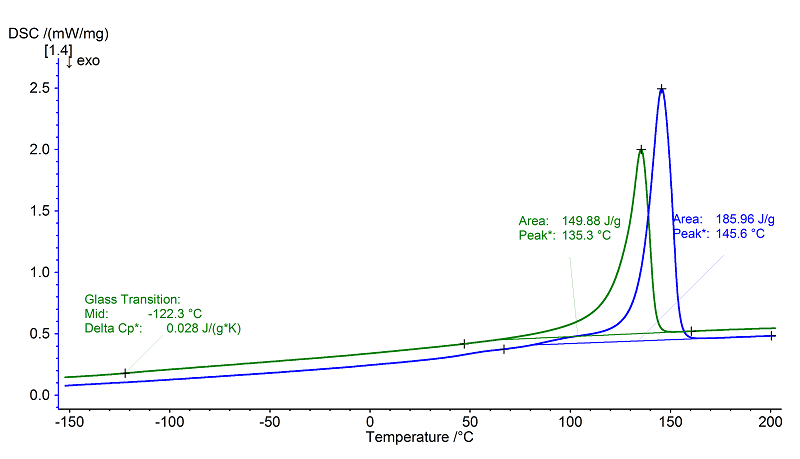PE-UHMW: Polyethylene ultra high molecular weight
- Short Name
- PE-UHMW
- Name
- Polyethylene ultra high molecular weight
- Group
- CTP - Commodity Thermoplastics
- General Properties
- Chemical Formula
- Structural Formula
-

Properties
- Glass Transition Temperature
- -130 to -100 °C
- Melting Temperature
- 130 to 145 °C
- Melting Enthalpy
- - J/g
- Decomposition Temperature
- 480 to 490 °C
- Young's Modulus
- 570 to 790 MPa
- Coefficient of Linear Thermal Expansion
- 200 *10¯6/K
- Specific Heat Capacity
- 1.84 J/(g*K)
- Thermal Conductivity
- 0.41 to 0.51 W/(m*K)
- Density
- 0.93 to 0.94 g/cm³
- Morphology
- Semi-crystalline thermoplastic
- General properties
- Good sliding characteristics, high abrasion resistance, very low water absorption, high chemical resistance, very high impact strength.
- Processing
- Compression moulding, extrusion.
- Applications
- Fibres (light, high-stiff, e.g. reinforcement, sport accessories), medical engineering (implants), cables.
Internet Links
NETZSCH Measurements
- Instrument
- DSC 204 F1 Phoenix®
- Sample Mass
- 12.52 mg
- Isothermal Phase
- 20 min/2 min/20 min
- Heating/Colling Rates
- 10 K/min
- Crucible
- Al, pierced
- Atmosphere
- N2 (40 ml/min)

Evaluation
Like all polyethylenes, PE-UHMW is a semi-crystalline thermoplastic. The example shown exhibited a glass transition at -122°C (with a very small change in specific heat of 0.03 J/(g·K)) only in the 2nd heating (green curve).
The present sample was not granular. Rather, it was but a fine powder. Due to sintering of the powder during the 1st heating (blue), the melting effect (peak temperature) shifted by about 10 K to lower temperatures (from 146°C to 135°C) in the 2nd heating (green). The melting enthalpy decreased by approx. 19% from 185 J/g to approx. 150 J/g in the 2nd heating.
The present sample was not granular. Rather, it was but a fine powder. Due to sintering of the powder during the 1st heating (blue), the melting effect (peak temperature) shifted by about 10 K to lower temperatures (from 146°C to 135°C) in the 2nd heating (green). The melting enthalpy decreased by approx. 19% from 185 J/g to approx. 150 J/g in the 2nd heating.